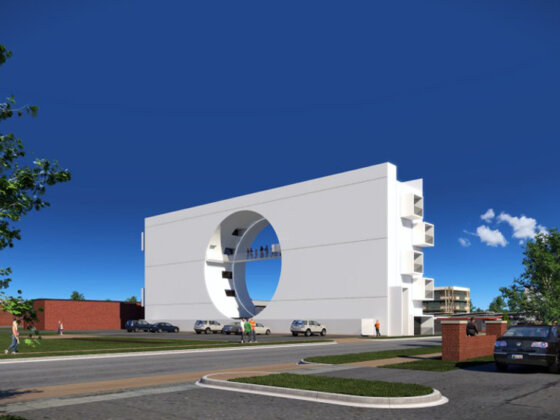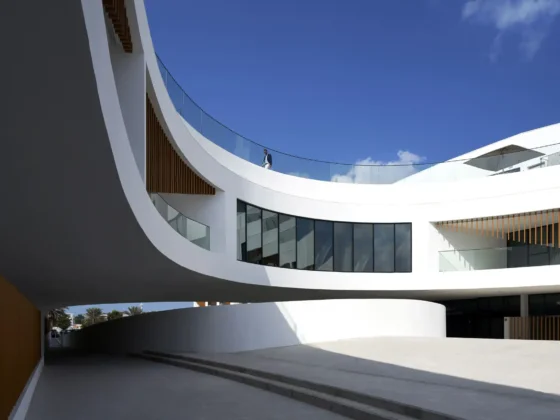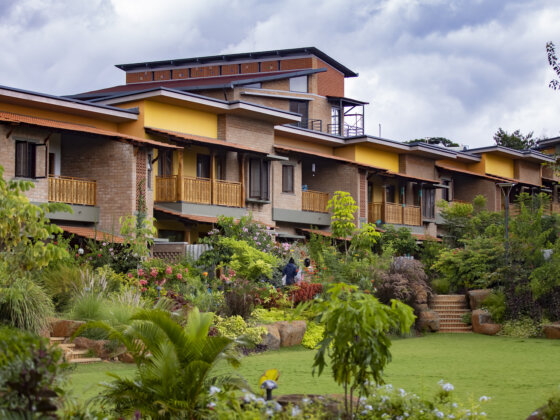Sault St. Marie, Ontario, Canada
“We’re really excited to be able to work closely with the Children of Shingwauk Alumni Association (CSAA), Indigenous and community partners, and Algoma University to help bring their vision for Mukqua Waakaa’igan to life,” says Eladia Smoke, Principal Architect at Smoke Architecture.
“Mukqua Waakaa’igan will showcase the decades of truth-telling work led by the Children of Shingwauk Alumni Association and the Shingwauk Residential Schools Centre,” explains Algoma University President and Vice-Chancellor Asima Vezina.
“As part of our commitments to the Calls to Action, Mukqua Waakaa’igan will provide a safe and culturally appropriate space to house and care for the archives from the residential schools’ history, the Aboriginal Healing Foundation Collection, and other important historical documents.”

“In carrying out this project with the utmost compassion toward victims of the aforementioned institution, as well as being conscious of the ongoing investigation currently happening there, our aspiration is to mark a step forward in the reconciliation process. The project signifier, the bear, represents healing,” states Moriyama & Teshima Architects
Mukwa Waakaa’igan Indigenous Centre of Cultural Excellence at Algoma University is set to be designed and developed by Moriyama & Teshima Architects and Smoke Architecture guided by the principles of environmental stewardship and inclusivity, providing visitors a stronger, more dominant, and dignified vantage point from which to look upon the site’s history.
The proposed concept focuses on the East as a place of entry, gathering and connectively with nature, the South as a direction that connects us back to the water, and the West as a space of entry into reconciliation and healing at the front door of the campus and the North as a transformative pathway for the youth to connect with the crying rock, the new student space, and the athletics center.
Mukqua Waakaa’igan will knit into the proposed bike and pedestrian paths and be a place of choice along a journey. The forest undergrowth (now overgrown with introduced species) can be remediated over time and can become an influence on the green spaces of the campus by replacing lawns with dry and wet meadow and giving character to this special place with a Special Mission.
The architectural design has been articulated through consideration of Indigenous teachings, from building form to material selection.
Mukqua Waakaa’igan will also create possibilities for new ways of learning and teaching that use the building and site as a place of exploration, grounding, and discovery.

The building becomes the landscape and is accessible to all offering an opportunity to heal oneself by creating a new perspective on the residential school, to orient and ground oneself by allowing for a variety of views of the context, and to foster a sense of hope and endurance by reconnecting to the distant views of the water, the origin of all life.
At the gateway to campus is Shingwauk Hall, a former residential school that operated between 1875 and 1970.
Since the school’s official closure, the Children of Shingwauk Alumni Association (CSAA) have been working with Algoma University to teach the truth about the residential school system’s history in Canada and work toward healing.
The new Cultural Centre’s architectural expression comes from the land, rising up through three paths that represent the past, present, and future, and standing above the residential school.

This would become a place of cross-cultural learning and teaching underpinned by the Anishinaabe traditions and values.
“Imagine a place where one can teach and learn through the eyes of the indigenous heritage and where the views and perspectives of all are welcomed and shared in hope of creating understanding and respect for each other and for the planet,” explains Smoke Architecture.
This lifted position provides visitors a stronger, more dominant, and dignified vantage point from which to look upon the site’s history.
The designers’ proposal was developed to honor the three dimensions of The Sweetgrass Path: Past, the direction of memory, honoring what children experienced in places such as these, and recognizing how it continues to impact us, present recognizing where we are, where we are from, where we are going, and future, connecting indoor spaces with nature and reinvigorating the campus.

In the Anishinaabemowin language, Mukqua Waakaa’igan refers to the healer bear’s den, a medicine carrier and healer of mind, body, and spirit. Mukwa Waakaa’igan is the name given to this building in Ceremony.
The three braids of sweet grass represent Present, Past, and Future. By weaving these three timelines – the essence of creation – tracing one’s healing journey through the new building: with colonial history, empowering present, and a sustainable future.

The Medicine Wheel holds spiritual symbolism throughout teachings in Anishinaabe culture. It presents a holistic understanding of the interconnectedness and cyclical nature of life, from the four seasons to the seven sacred directions.
The Tikinagan plays a fundamental role in the child-rearing practices of Indigenous peoples, embodying family relationships and a sense of belonging. This tool represents the life in the womb for the infant: a place of warmth, comfort, and security.
A natural resource that is abundant around the site, Lake Superior to the South, and wetlands throughout the area, water allows visitors to orient and ground themselves. Views of nature are important in this building, and water makes an important connection to the origin of life.






Project: Mukwa Waakaa’igan Indigenous Centre of Cultural Excellence
Architects: Moriyama & Teshima Architects Inc. and Smoke Architecture Inc.
Design Team: Carol Phillips, Eladia Smoke, Mahsa Majidan, and Larissa Roque
Client: Algoma University
Photographers: Moriyama & Teshima Architects Inc.












